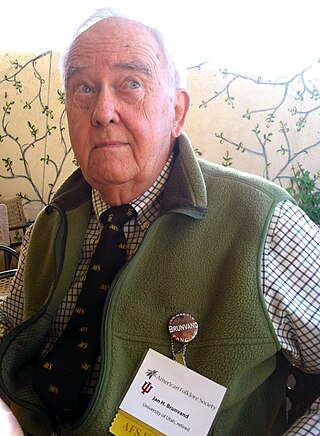A chain letter is a message that attempts to convince the recipient to make a number of copies and pass them on to a certain number of recipients. The "chain" is an exponentially growing pyramid that cannot be sustained indefinitely.

A hoax is a widely publicized falsehood so fashioned as to invite reflexive, unthinking acceptance by the greatest number of people of the most varied social identities and of the highest possible social pretensions to gull its victims into putting up the highest possible social currency in support of the hoax.

A legend is a genre of folklore that consists of a narrative featuring human actions, believed or perceived to have taken place in human history. Narratives in this genre may demonstrate human values, and possess certain qualities that give the tale verisimilitude. Legend, for its active and passive participants, may include miracles. Legends may be transformed over time to keep them fresh and vital.
There are multiple urban legends centering around the fast-food chain McDonald's. These legends include claims about the food and allegations of discrimination by the company.

Snopes, formerly known as the Urban Legends Reference Pages, is a fact-checking website. It has been described as a "well-regarded reference for sorting out myths and rumors" on the Internet. The site has also been seen as a source for both validating and debunking urban legends and similar stories in American popular culture.
The vanishing hitchhiker is an urban legend in which people travelling by vehicle, meet with or are accompanied by a hitchhiker who subsequently vanishes without explanation, often from a moving vehicle.
Faxlore is a sort of folklore: humorous texts, folk poetry, folk art, and urban legends that are circulated, not by word of mouth, but by fax machine. Xeroxlore or photocopylore is similar material circulated by photocopying; compare samizdat in Soviet-bloc countries.

The blue star tattoo legend is an urban legend which states that a temporary lick-and-stick tattoo soaked in LSD and made in the form of a blue star, or of popular children's cartoon characters, is being distributed to unknowing children in any given area.

Jan Harold Brunvand is a retired American folklorist, researcher, writer, public speaker, and professor emeritus of English at the University of Utah.
The "Well to Hell" is an urban legend regarding a putative borehole in Russia which was purportedly drilled so deep that it broke through into Hell. It is first attested in English as a 1989 broadcast by a U.S. domestic religion-based TV broadcaster, Trinity Broadcasting Network.
The Hook, or the Hookman, is an urban legend about a killer with a pirate-like hook for a hand attacking a couple in a parked car. In many versions of the story, the killer is typically portrayed as a faceless, silhouetted old man wearing a raincoat and rain hat that conceals most of his features, especially his face.
The killer in the backseat is an urban legend from the United States and United Kingdom. It was first noted by folklorist Carlos Drake in 1968 in texts collected by Indiana University students.
The Choking Doberman is an urban legend that originated in the United States. The story involves a protective pet found by its owner gagging on human fingers lodged in its throat. As the story unfolds, the dog's owner discovers an intruder whose hand is bleeding from the dog bite.
The Baby Train, or simply Baby Train, is an urban legend told in the United States, United Kingdom and Australia. The legend first appeared in Christopher Morley's 1939 novel Kitty Foyle. According to the legend, a certain small town had an unusually high birth rate. This was allegedly caused by a freight train passing through the town and blowing its whistle, waking up all the residents. Since it was too late to go back to sleep and too early to get up, couples would have sex. This resulted in a mini-baby boom.
Traditional stories, or stories about traditions, differ from both fiction and nonfiction in that the importance of transmitting the story's worldview is generally understood to transcend an immediate need to establish its categorization as imaginary or factual. In the academic circles of literature, religion, history, and anthropology, categories of traditional story are important terminology to identify and interpret stories more precisely. Some stories belong in multiple categories and some stories do not fit into any category.

Gerbilling, also known as gerbil stuffing or gerbil shooting, is purportedly a sexual practice of inserting small live animals into one's rectum to obtain stimulation. Some variations of reports suggest that the rodent be covered in a psychoactive substance such as heroin prior to being inserted. Yet there are few documents on how this was achieved or enjoyed as all rodents have long nails and teeth for digging or burrowing and naturally try to burrow out of any small spaces.

Invented traditions are cultural practices that are presented or perceived as traditional, arising from the people starting in the distant past, but which in fact are relatively recent and often even consciously invented by identifiable historical actors. The concept was highlighted in the 1983 book The Invention of Tradition, edited by Eric Hobsbawm and Terence Ranger. Hobsbawm's introduction argues that many "traditions" which "appear or claim to be old are often quite recent in origin and sometimes invented." This "invention" is distinguished from "starting" or "initiating" a tradition that does not then claim to be old. The phenomenon is particularly clear in the modern development of the nation and of nationalism, creating a national identity promoting national unity, and legitimising certain institutions or cultural practices.

Canadian folklore is the traditional material that Canadians pass down from generation to generation, either as oral literature or "by custom or practice". It includes songs, legends, jokes, rhymes, proverbs, weather lore, superstitions, and practices such as traditional food-making and craft-making. The largest bodies of folklore in Canada belong to the aboriginal and French-Canadian cultures. English-Canadian folklore and the folklore of recent immigrant groups have added to the country's folk.

Black-eyed children or black-eyed kids, in American contemporary legend, are paranormal creatures that resemble children between ages 6 and 16, with pale skin and black eyes, who are reportedly seen hitchhiking or begging, or are encountered on doorsteps of residential homes.










